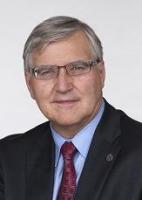The International Federation of Red Cross and Red Crescent Societies
Summary
- The application of Ro principles and methodology to a global organization. While we applied it at an international organization, I can also say that I can apply for a national organization, national, not for profits. There are four aspects I'd like to deal with and highlight some of the salient points.
- The International Federation Red Cross is the largest humanitarian network in the world. I took over in December of 92, but it was 1994. Review of the operating systems led to 103 recommendations to improve the effectiveness of the organization.
- Only 45% of all managers were aligned properly, 55% were not aligned properly. The field geneva relations needed clarification and strengthening who were the boss of the field people. A better balance between relief, raising money for relief and dealing with relief. Results were improved and 99 years later we had increased productivity.
Transcript is not available
President & CEO at WebX Consulting Group
Chairman of the Board of Directors, Calian Group


